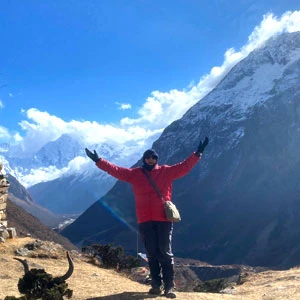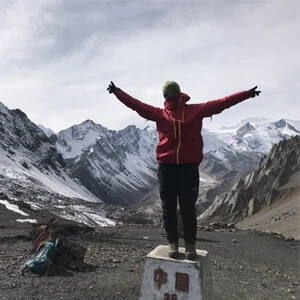Tips For A Successful Himalayan Trek to Rara
- Respect the privacy of local people and kindly ask for permission before photographing them or their children.
- Appreciate and respect the local culture and customs.
- For your own personal safety, always stay on the uphill side of a trail when being passed by donkeys.
- In landslide zones, either traverse them quickly or climb over and around them if at all feasible.
- Smoking and drinking alcohol at altitudes above 3,000 meters are not recommended.
- Drink a minimum of three liters of water per day.
- Remain aware of symptoms related to altitude sickness and be honest about any signs with yourself and your guide.
- Even when not mandated, there are always benefits to using the invaluable services of a guide on a trek.
Transportation To Rara National Park Adventure
Transportation to Rara Lake involves a combination of flights and road travel, offering both convenience and adventure. The journey begins with a flight from Kathmandu to Nepalgunj, a vibrant city in western Nepal, which serves as the gateway to the trek. This flight takes about 1 hour and provides stunning views of the Terai plains and distant mountain ranges.
From Nepalgunj, trekkers typically take a connecting flight to Talcha Airport, which is the nearest airport to Rara Lake. The flight to Talcha takes about 30 minutes and is an exhilarating experience, as it offers spectacular aerial views of the rugged landscape. Upon landing at Talcha, trekkers need to hike for approximately 2-3 hours to reach Rara Lake.
For those who prefer road travel, an alternative is to drive from Nepalgunj to Jumla, followed by trekking to Rara Lake. This option is more time-consuming but allows for a deeper exploration of the region's cultural and natural beauty. Regardless of the mode of transportation chosen, reaching Rara Lake is an unforgettable part of the journey, blending convenience with breathtaking scenery.
Meals During The Rara Region Trek
Meals during the Trek to Rara Lake are simple yet fulfilling. Trekkers will get to enjoy traditional Nepali dishes, including dal bhat (rice with lentil soup), seasonal vegetables, pickles, and sometimes meat curries. This staple meal provides the necessary energy for trekking and is widely available at teahouses along the trail.
In addition to dal bhat, trekkers can find other meals like noodles, soups, fried rice, and chapati with curry. Breakfast options typically include items like boiled eggs, pancakes, bread, or porridge served with tea or coffee. The food is cooked fresh and served warm, providing comfort in the cool mountain climate.
As you approach Rara Lake, the options may become more limited due to the remoteness of the region. It is advisable to carry some snacks, such as energy bars, nuts, or chocolates, to supplement your meals and keep your energy levels high. Staying hydrated is essential, so carrying a reusable water bottle with a water purification system is highly recommended.
Accommodation During The Rara Region Trek
Accommodation during the Rara Lake trek is primarily in teahouses and basic lodges along the trail. The accommodation options are simple but comfortable enough for trekkers to rest after a day of trekking. In lower-altitude regions, teahouses offer relatively more amenities, including clean rooms with basic furnishings, shared bathrooms, and common areas where trekkers can relax and socialize.
As you progress further into the trek, the accommodation becomes more basic. The rooms are often smaller and may have fewer facilities. Some teahouses provide blankets, but it’s a good idea to bring your own sleeping bag for extra warmth. In remote areas near Rara Lake, accommodation options become even more limited, and trekkers may have to share rooms.
Telephone Service, Internet, And Battery Charging During The Himalayan Trek to Rara
Telephone Service:
Mobile phone coverage is available in some parts of the trek, especially in lower-altitude areas such as near Nepalgunj and some villages along the route. However, once you ascend to higher altitudes and more remote locations, the signal may become weak or unavailable. You can purchase local SIM cards: Ncell or NTC.
Internet:
Internet access is limited during the trek to Rara Lake. Some of the larger teahouses and lodges may offer Wi-Fi or internet service, but it can be slow and unreliable, particularly as you reach higher elevations. In more remote villages near Rara Lake, internet connectivity is often unavailable.
Battery Charging:
Battery charging facilities are available at most teahouses along the trek, but it’s essential to keep in mind that electricity in these remote areas may be provided by solar power or generators, so charging options could be limited or come with an additional fee. It’s recommended to carry a portable power bank or extra batteries to ensure your devices remain charged throughout the trek. Be prepared for occasional power outages, and try to manage your charging needs in advance, especially as you move further into the remote parts of the trek.
Porter
Hiring a porter for this trek can significantly enhance your trekking experience, especially given the challenging terrain and remote nature of the region. Having them by your side will help you carry heavy gear, allowing you to trek more comfortably and focus on the journey, rather than worrying about the weight of your pack. A typical porter carries around 15-20 kg of your luggage and can also serve as an invaluable local guide, offering insights into the culture, history, and customs.
Packing List For Remote Trek To Rara Lake
Packing for the remote trek to Rara Lake requires careful consideration due to the trek’s challenging terrain and high-altitude conditions. Here’s a comprehensive list of items you will need.
Clothing:
- Moisture-wicking thermal
- Fleece jacket or pullover
- Insulating down or synthetic jacket
- Waterproof and windproof jacket and pants
- Lightweight trekking pants
- Hiking shorts
- Warm hat (wool or fleece)
- Sun hat or cap
- Neck gaiter
- Liner gloves (lightweight)
- Undergarments
Footwear:
- Trekking boots (waterproof and well-broken-in)
- Lightweight camp shoes or sandals
- Warm socks (wool or synthetic)
Gear:
- Sleeping bag
- Trekking backpack (50-65 liters, with rain cover)
- Adjustable trekking poles (with snow baskets if trekking in snow)
- Lightweight, durable tent
- Headlamp or flashlight (with extra batteries)
- Water bottles
- Water purification tablets or filter
Extra Items:
- Sunglasses (UV protection)
- Sunblock (high SPF)
- Lip balm
- Camera or smartphone (with spare batteries and memory cards)
- Personal medications and first-aid kit
- Hand sanitizer and wet wipes
- Biodegradable soap
- Towel (quick-drying)
- Female hygiene products
Travel Insurance
As the trek to Rara Lake takes place in a remote and rugged landscape, buying an insurance plan is a must! It ensures that you are covered in case of unexpected events such as accidents, medical emergencies, or unforeseen trip cancellations, which can be particularly important in the high-altitude environment of the Himalayas.
If you are buying a travel insurance plan, it is vital to ensure that it covers the high altitude that you are trekking in. Additionally, make sure the medical and evacuation costs are reimbursed beforehand. Another critical aspect of travel insurance is coverage for lost or stolen belongings. While buying a travel insurance plan, make sure it financially covers any disruptions in the trek.
With the right insurance policy in place, you can focus on enjoying the breathtaking beauty of the Himalayas, knowing that you're safeguarded every step of the way.
Nepalese Currency and Payment:
The currency of Nepal is the rupee. The ideal currencies for exchange are those of the USA, Australia, Great Britain, Canada, and Singapore, as well as the Euro, any of which can be readily exchanged in either Kathmandu or Pokhara.
Credit and debit cards such as Visa, MasterCard, and American Express are accepted in major tourist-class hotels, restaurants, airlines, and larger stores in Kathmandu, Bhaktapur, Patan, Pokhara, etc. A surcharge of 3.5% is typically levied on all purchases or payments.
ATMs are also very common in Kathmandu and Pokhara, with Thamel being a particular area of focus for their use. Some ATMs only allow a daily maximum of Rs 10,000 to be withdrawn, while others allow for as much as Rs 35,000. A charge of USD 5 is usually applied per transaction, on top of which your own bank may also apply a fee of its own.
Can I get an on-arrival visa in Nepal?
On arrival in Nepal, you can obtain the requisite visa at Tribhuwan International Airport in Kathmandu, or you can choose the alternative of applying for it at the Nepalese Embassy or Consulate in your home country before departure. The visa is also available at land-based points of entry such as Birgunj, Kakarbhitta, Bhairawa, Belhiya, Nepalgunj, Dhangadi, and Mahendranagar. The Kodari Pass is the access point from Tibet where the visa can be obtained.
While you can use different modes of payment at the visa fee counter, we advise you to bring cash in the following currencies: US dollars, euros, Swiss francs, pound sterling, Australian dollars, Canadian dollars, Hong Kong dollars, Singapore dollars, and Japanese yen. Credit card payments are also available nowadays.
As per a recent update, the visa fee costs you the following amounts:
- Multiple entries for 15 days—USD 30 or equivalent
- Multiple entries for 30 days—USD 50 or equivalent
- Multiple entries for 90 days—USD 125 or equivalent
- You should also have a minimum of six months of validity remaining on your passport.
- Visa extensions are available from the offices of Nepal Immigration in Kathmandu and Pokhara.
For more details, please go through the Nepal immigration website or contact us.




